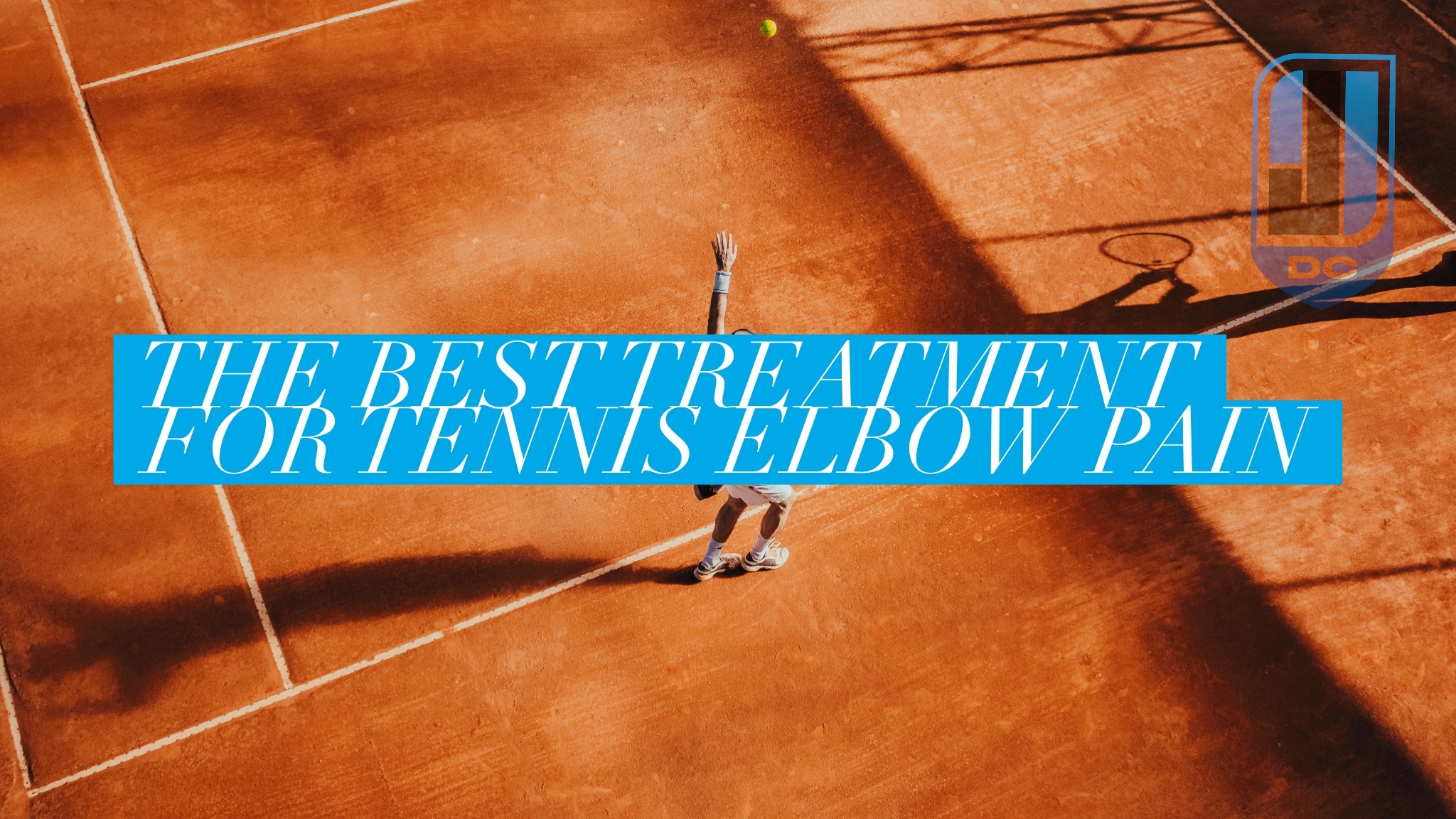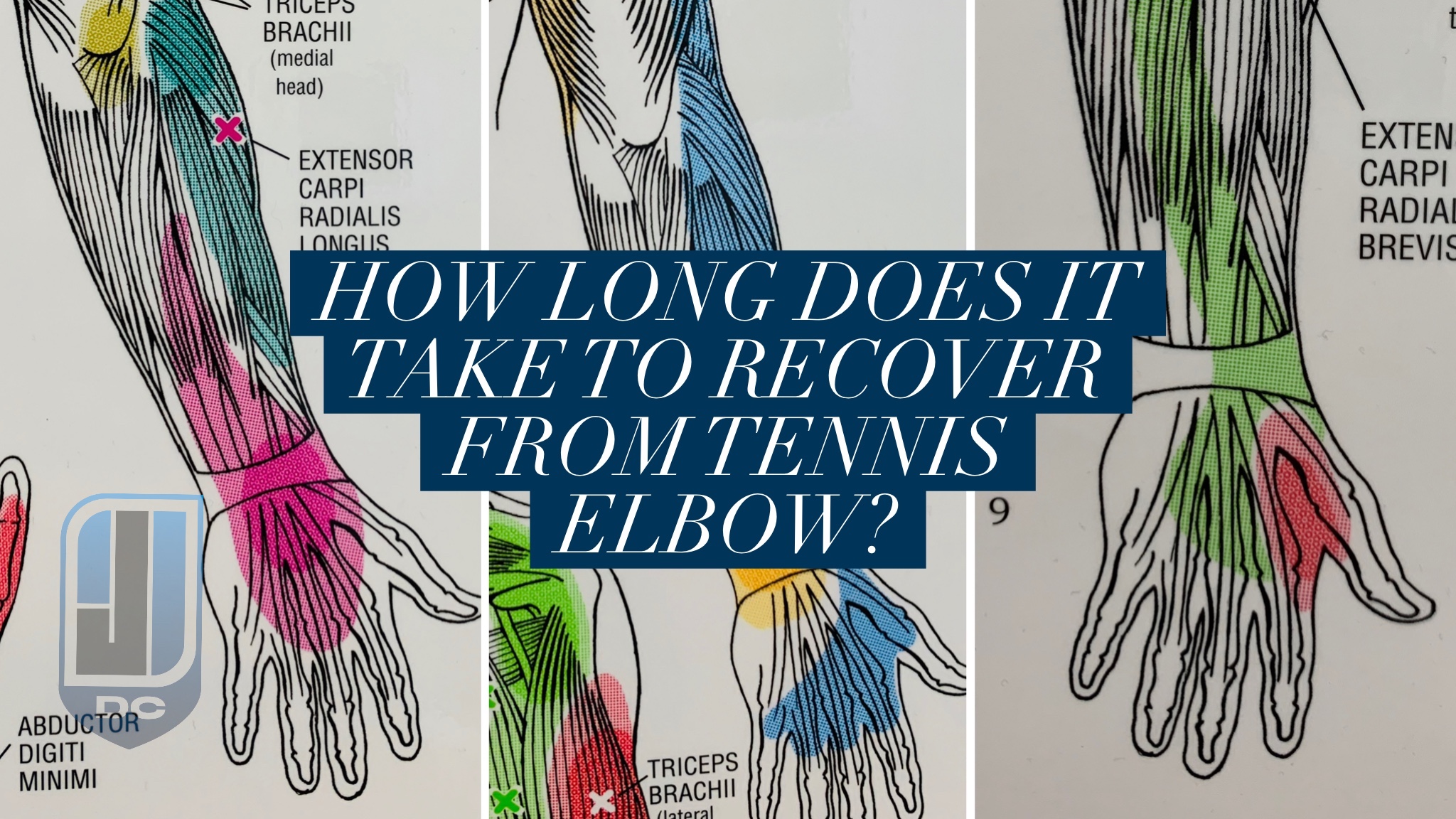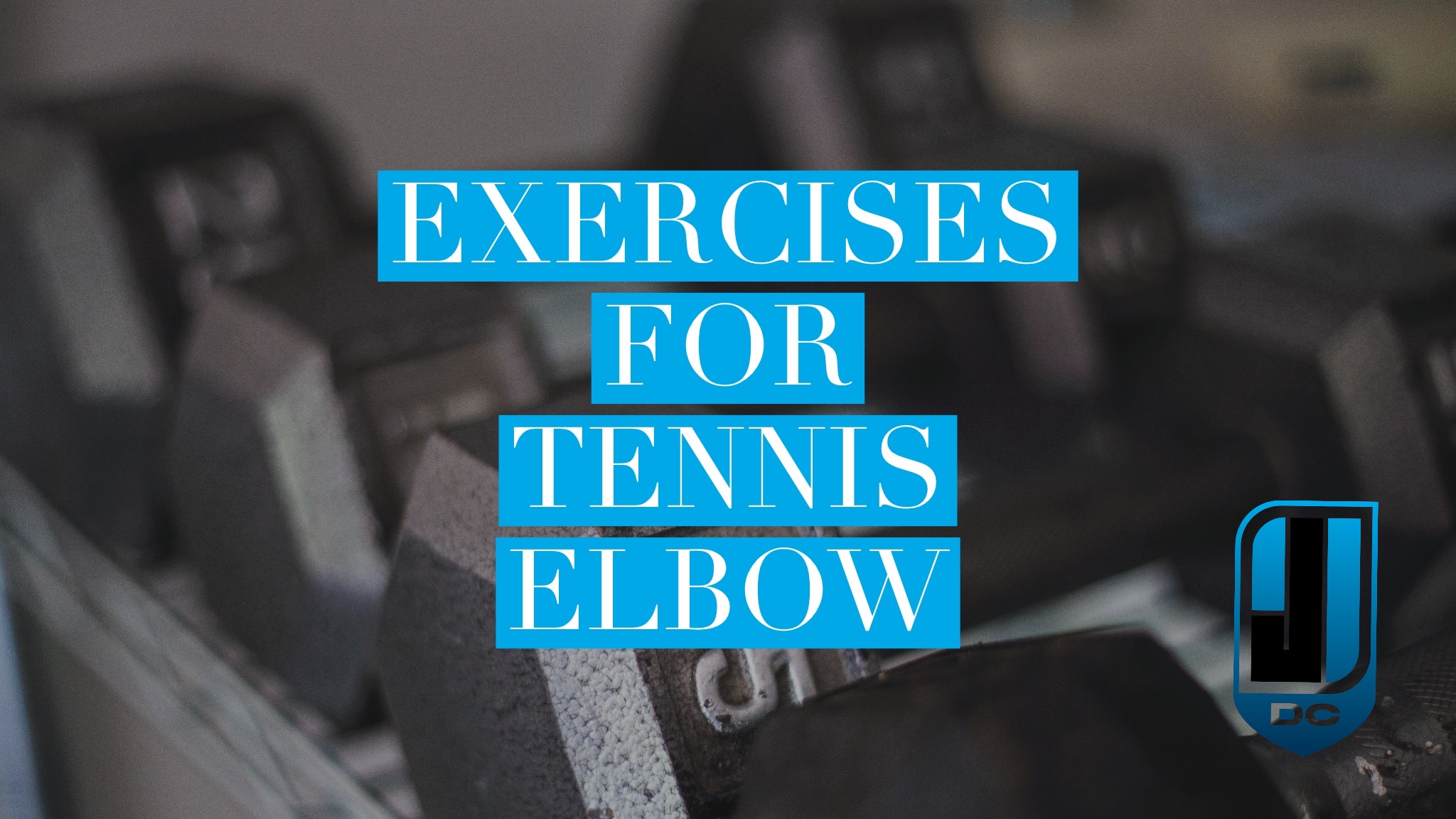Can Vitamin D deficiency cause tennis elbow? New research is shedding some light on how low Vitamin D levels and and developing tennis elbow may be related. I’m going to dig into the new research and explain how tennis elbow pain may be related to your Vitamin D levels.
If you haven’t read my other posts on tennis elbow (lateral epicondylitis) make sure you check them out below! In them, I answer all your questions about tennis elbow including, most importantly, how to recover from tennis elbow!
The Study Comparing Vitamin D Levels and Tennis Elbow
In a new study published July 6th, 2022 in the Journal of Joint Diseases and Related Surgery (what a name) researchers measured Vitamin D levels in a group with tennis elbow pain and a group without tennis elbow pain (a “control” group.) Here’s a breakdown of the groups:
- 40 people diagnosed with tennis elbow with an average age of 38.6 and total age range of 18 – 59. 17 were males and 23 were females.
- 66 people with no elbow pain with an average age of 33.6 and total age range of 18 – 58. 33 were females and 33 were males.
The researchers used a blood test to measure the Vitamin D levels in both groups and categorized each person into 1 of 3 groups:
- Normal Vitamin D: People with Vitamin D levels over 30 ng/mL.
- Vitamin D Insufficiency (mild decrease): People with Vitamin D levels between 20-30 ng/ML.
- Vitamin D Deficiency (large decrease): People with Vitamin D levels under 20 ng/ML.
After each person was categorized into one of these groups they used statistical analysis to compare the Vitamin D levels between those who had tennis elbow pain and those without any elbow pain.
What Were the Results of the Study?
If you’re suffering from tennis elbow, chances are you haven’t considered that your Vitamin D levels could be playing a part. This study may beg to differ. After analyzing the results the researchers found:
Tennis elbow group:
- Average Vitamin D level of 16.47 ± 8.22 (standard deviation)
- 31/40 (77.5%) had Vitamin D deficiency.
- 4/40 (10%) had Vitamin D insufficiency.
- Only 5/40 (12.5%) had normal Vitamin D levels.
Another way of thinking about these statistics is that 87.5% of people with tennis elbow have low Vitamin D levels (in this study.)
Control group:
- No elbow pain group: Average Vitamin D level of 23.64 ± 8.4 (standard deviation)
- 29/66 (43.9%) had Vitamin D deficiency.
- 20/66 (30.3%) had Vitamin D insufficiency.
- 17/66 (25.8%) had normal Vitamin D levels.
This means that 73.9% of people with no elbow pain had low Vitamin D levels (in this study.)
Vitamin D and Tennis Elbow Relationship
The key takeaway of this study is that people with tennis elbow have significantly lower Vitamin D levels than those without elbow pain (in this study.) In fact, the percentage of those with normal Vitamin D levels with no elbow pain was twice that of those with normal Vitamin D levels who had lateral epicondylitis.
What does this tell us? The authors of the study conclude that low Vitamin D levels may be one of the factors involved in the development of tennis elbow. However, you have to remember that this study is limited, we can’t draw any widespread conclusions from it. It simply shows that out of the 106 participants in the study, there is an association between tennis elbow and low Vitamin D. Unfortunately, you can’t draw a causal relationship from the results. In order to show a cause and effect relationship, it would require a more in depth study of a different type. Hopefully this is done in the future.
So, Does Vitamin D Deficiency Cause Tennis Elbow?
The answer is, unfortunately, we’re not sure. However, there IS an association between the two. I would hypothesis that it doesn’t cause tennis elbow but it may make you at higher risk for it.
Although the study doesn’t prove a causal relationship, if I was treating a patient with tennis elbow, I would have Vitamin D levels checked. If their levels were suboptimal, I’d have the patient take measures to raise them. It’s possible that raising Vitamin D levels in those with tennis elbow may have positive effects. Positive effects could include a shorter recovery, prevention of future episodes of tennis elbow, or improved tissue healing. We just don’t know, yet.
It certainly doesn’t hurt to address suboptimal Vitamin D levels and doing so has other positive health impacts.

Jason Williams DC is a licensed Doctor of Chiropractic with Physical Therapy Modality and Acupuncture privileges. He is a chiropractor in Dumfries, VA at Sentara Therapy Center. Dr. Williams’ clinical expertise is in the evaluation, treatment, and rehabilitation of neuro-musculoskeletal conditions. Specific focuses include spinal, extremity, and sports-related complaints. He brings a patient-first attitude to his treatments and is a proponent of evidence-based and integrative care. See more content and his contact info here.
The opinions and views are mine personally, and do not necessarily reflect the views of others in the profession, my employer, or organizations that I belong to.






